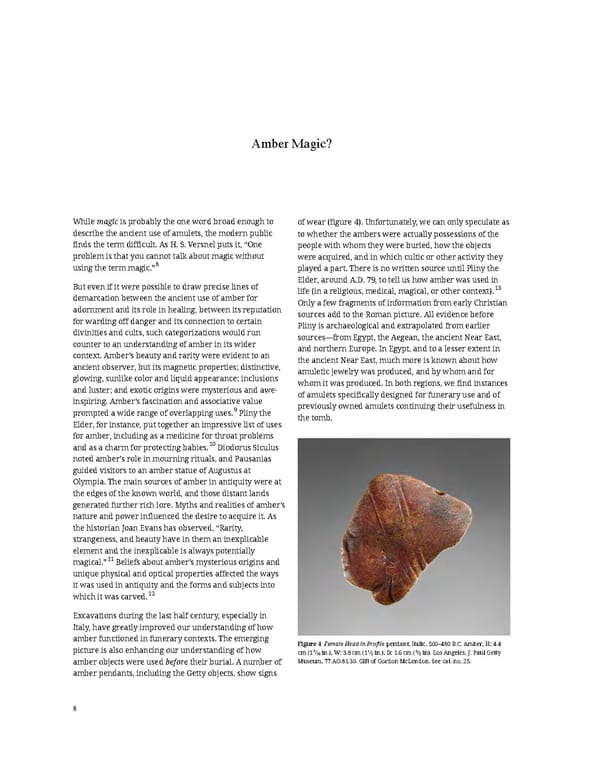Amber Magic? Whilemagicis probably the one word broad enough to of wear (figure 4). Unfortunately, we can only speculate as describe the ancient use of amulets, the modern public to whether the ambers were actually possessions of the finds the term difficult. As H. S. Versnel puts it, “One people with whom they were buried, how the objects problem is that you cannot talk about magic without were acquired, and in which cultic or other activity they using the term magic.”8 played a part. There is no written source until Pliny the But even if it were possible to draw precise lines of Elder, around A.D. 79, to tell us how amber was used in life (in a religious, medical, magical, or other context).13 demarcation between the ancient use of amber for Only a few fragments of information from early Christian adornment and its role in healing, between its reputation sources add to the Roman picture. All evidence before for warding off danger and its connection to certain Pliny is archaeological and extrapolated from earlier divinities and cults, such categorizations would run sources—from Egypt, the Aegean, the ancient Near East, counter to an understanding of amber in its wider and northern Europe. In Egypt, and to a lesser extent in context. Amber’s beauty and rarity were evident to an the ancient Near East, much more is known about how ancient observer, but its magnetic properties; distinctive, amuletic jewelry was produced, and by whom and for glowing, sunlike color and liquid appearance; inclusions whom it was produced. In both regions, we find instances and luster; and exotic origins were mysterious and awe- of amulets specifically designed for funerary use and of inspiring. Amber’s fascination and associative value previously owned amulets continuing their usefulness in prompted a wide range of overlapping uses.9 Pliny the Elder, for instance, put together an impressive list of uses the tomb. for amber, including as a medicine for throat problems and as a charm for protecting babies.10 Diodorus Siculus noted amber’s role in mourning rituals, and Pausanias guided visitors to an amber statue of Augustus at Olympia. The main sources of amber in antiquity were at the edges of the known world, and those distant lands generated further rich lore. Myths and realities of amber’s nature and power influenced the desire to acquire it. As the historian Joan Evans has observed, “Rarity, strangeness, and beauty have in them an inexplicable element and the inexplicable is always potentially magical.”11 Beliefs about amber’s mysterious origins and unique physical and optical properties affected the ways it was used in antiquity and the forms and subjects into which it was carved.12 Excavations during the last half century, especially in Italy, have greatly improved our understanding of how amber functioned in funerary contexts. The emerging Figure 4 Female Head in Profile pendant, Italic, 500–480 B.C. Amber, H: 4.4 picture is also enhancing our understanding of how cm (17⁄10 in.), W: 3.8 cm (11⁄2 in.), D: 1.6 cm (3⁄5 in). Los Angeles, J. Paul Getty amber objects were used before their burial. A number of Museum, 77.AO.81.30. Gift of Gordon McLendon. See cat. no. 25. amber pendants, including the Getty objects, show signs 8
 Ancient Carved Ambers in the J. Paul Getty Museum Page 17 Page 19
Ancient Carved Ambers in the J. Paul Getty Museum Page 17 Page 19
